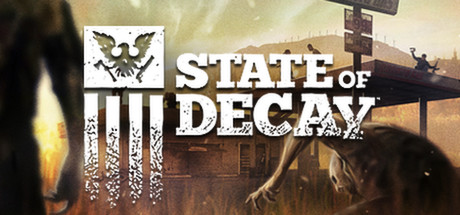I've been playing Undead Labs's
State of Decay for the past several weeks after nabbing it on a Steam sale. The game is a single-player third-person zombie apocalypse sandbox of sorts: while the main game has a storyline to follow, you certainly don't need to follow it and the story won't advance until you do, giving you a lot of time to just poke around.
I have enjoyed the game very much. It's certainly interesting enough to play and while it starts out reasonably tame, it can get quite difficult.
The main game begins with your character and a buddy returning to the more civilization-adjacent parts of a national park after a two-week fishing trip only to find that, while you were gone, civilization kind of had a major meltdown.
From there, the game focuses on steath and survival by building up friendships with others and establishing a base from which to operate and outposts to reinforce that base and provide small "safe zones".
 |
| Ed and Marcus, returning from their fishing trip. |
Criticisms
The criticisms I have are few. To start, the story is very simple and somewhat shallow — it would be easy to play through it relatively quickly and then be just done with the game. A lot more could have been done, but, as I understand it this was Undead Labs's first game, so we will perhaps see more story development in their next full release.
Second, there just isn't enough information in the tutorial; you feel bombarded with information (because a lot comes in through your Journal) that you can't make much sense of — and then lost because basic information (such as the benefits of establishing an Outpost, or whether it's wise to leave resources in Outposts or loot them thoroughly before setting one up in a location) can be a little difficult to find (so much so that I took notes as I played and figured them out and ended up writing a
Quick Start Guide)
Third, there are too few voice actors, meaning that you end up with the same voice actors' lines being used for several different characters who end up sounding exactly the same while they say (verbatim) the same things; get two of them with the same voice together on a mission and it can get kind of confusing.
Finally: the driving physics and UI need some work. The game was set up for XBox, so maybe this is where PC players like me start to have problems. But while I can play Saints Row and Grand Theft Auto and drive just fine, I find the driving in
State of Decay frustrating — especially because the smallest mistake can send a car sailing through the air as though it suddenly weighs nothing. And cars that turn over always explode, so there's that.
Praise
Meanwhile, though,
State of Decay is nice to look at: the colors are just muted enough to evoke the proper autumn at the end-of-the-world feeling, and there has been a
lot of attention to detail in filling out the large area (Trumbull Valley) in which your character gets to roam. There are three small towns to explore, as well as a lot of countryside, with a lot of interesting things to look at if you appreciate the details.
 |
| Ed, Marcus, and Maya, talking stuff through at the river. |
The game also makes you take a step back and figure out how to survive. Your character can go stealth or maniac, or pretty much anything in between. But don't count on the zombies to cooperate since that's sure to get your favorite character eaten nearly every time. And since death is final, that really makes a difference.
Strategy and sound are important, which I really enjoy, and on top of that there is also resource management to deal with: you've got a base full of survivors who need food, medicine, and ammunition to remain survivors, and construction materials to keep their base up. Scavenging through the zombie-infested, burnt-out world is a constant necessity.
 |
| An homage to Plants vs. Zombies |
In the end, the game is definitely worth a few bucks (especially if you can catch it on sale), and I look forward to other games from Undead Labs.
Breakdown DLC
I've played several hours of the Breakdown DLC (at level 5, currently), and it's been a lot of fun and a lot of frustration, but the frustration really seems to be the point of it. It's primarily the sandbox version of the base game, with a couple simple tasks to do to "move to the next level". Each level, the zombies get more numerous and more difficult to deal with and the scavenge-able resources get harder to find.
If you don't mind that sort of challenge — the one where you are pretty sure you'll ultimately fail — it can end up being a lot of fun.
Lifeline DLC
I haven't gotten to the Lifeline DLC yet. I'll be writing more when I do!











